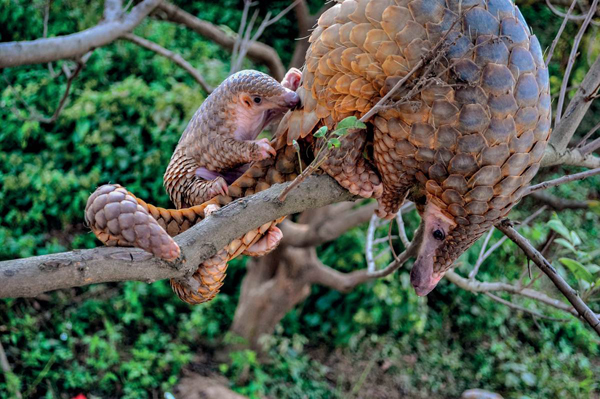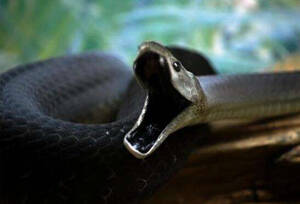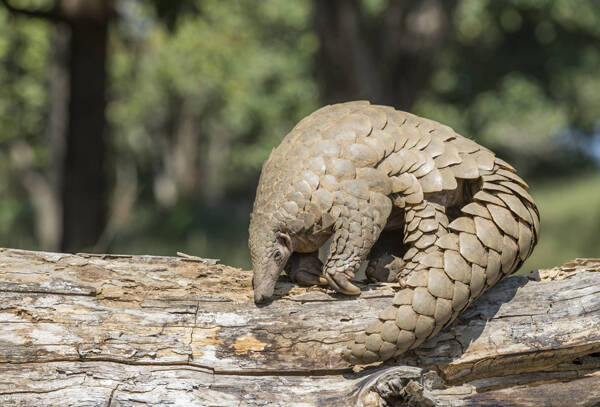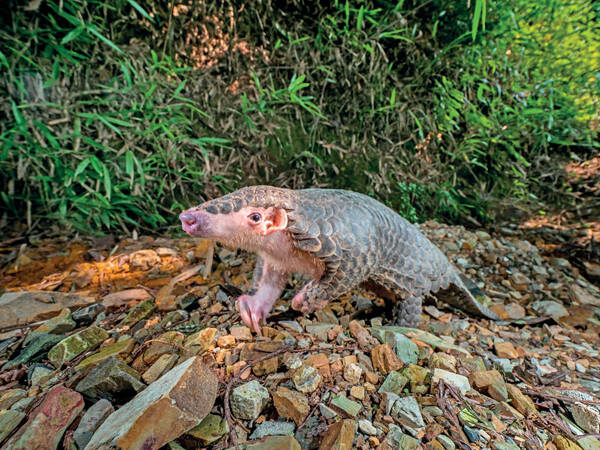Manis javanica
IUCN
LCBasic Information
Scientific classification
- name:Manis javanica
- Scientific Name:Manis javanica, pangolin, dace carp
- Outline:Pangolins
- Family:Pholidota Pangolinidae G.Pangolin
Vital signs
- length:75-122cm
- Weight:4.5-14kg
- lifetime:7-20years
Feature
There is a white scale on the tail and dark brown scales all over the body.
Distribution and Habitat
It is distributed in Yingjiang, Yunnan Province, China, and abroad in Myanmar, Laos, most of Thailand, central and southern Vietnam, Cambodia, Peninsular Malaysia, and Sumatra, Java and Kalimantan in Indonesia.
Malayan pangolins can be found in a variety of habitats, including primary forests, secondary forests, lowland forests, cultivated land such as gardens, oil palm and rubber plantations, and are often found near human settlements. The species usually occurs at an altitude of about 1,700 meters above sea level.
Appearance
The external morphology is similar to that of the Chinese pangolin, and it is difficult for non-professionals to distinguish them. However, the body is more slender. Except for the ventral surface and the inner side of the limbs, which are covered with sparse hair, the rest of the body is covered with tile-like scales. There are bundles of hard hairs between the scales that are exposed outside the scales. There are 17-19 rows of scales around the back and sides of the body. The body length is 40-62cm. The weight is 2-6kg. The head is small and conical, and the snout is pointed. There are no teeth. The tongue is long, usually more than 20cm. The eyes are small. The external ear flap is not well developed, and it is smaller than that of the Chinese pangolin. The tail is 30-53cm long, longer than that of the Chinese pangolin; there are 20-30 scales on the side edge of the tail, which is more than that of the Chinese pangolin. The limbs are short and stout, with 5 toes on both the front an
Details
Malayan pangolins are nocturnal animals that rest during the day curled up in tree holes or burrows and come out to forage throughout the night, using their prehensile tails to climb trees in pursuit of prey. The diet consists mainly of ants and termites. They can easily locate ant nests with their keen sense of smell and can easily demolish ant forts using their large curved claws. To prevent bites, the species has special muscles that close the nose and thick eyelids to protect the eyes. They occasionally prey on other soft insects and larvae. They do this by sliding their long, sticky tongue through hidden cracks and crevices in trees. Amazingly, the tongue of this species can stretch up to 25 cm. Pangolins have no teeth, so ants and termites all go into the stomach and must be processed internally. Pangolins swallow sand and small stones to assist the grinding activity of the stomach, allowing them to digest their prey.
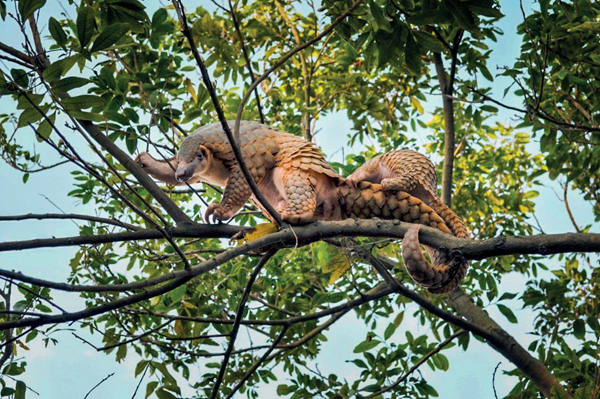
When threatened, the Malayan pangolin bends its body, curls its soft and hairy parts into its shell, and raises its sharp parts to ignore the threat. If it happens to be on a steep slope, its curled body is like a ball, and it can also avoid the enemy by rolling down the slope. If a ferocious beast wants to take it away from a cave or a tree, its armor will come into play again, stretching against branches or cracks in the rocks, making it impossible for the prey to pull it, and even its powerful tail can allow it to hang on the tree.
The Malayan pangolin has excellent hearing but produces very few sounds and is a relatively quiet animal. Although they produce aggressive grunts, hisses and gasps when they feel threatened. When attacked, the species will curl up into a tight ball to protect the vulnerable underside of its body and may ram the opponent with its sharp tail. The species can also emit a well-directed irritating liquid jet from its anal area as a defense mechanism and to mark its territory.
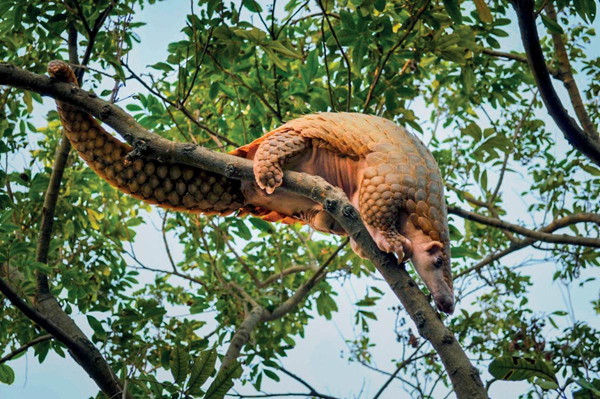
Female Malayan pangolins reach sexual maturity at 1 year old, with a gestation period of 3-4 months and only one cub per litter. The scales of newborn Malayan pangolins are soft and do not begin to harden until the second day of life. After giving birth, females will rest in the cave for 2-4 weeks before going out to move around and forage. Malayan pangolin cubs will attach to the back of the female very close to the base of the tail and cling tightly to the scales for about three months, after which they will begin to walk and forage on their own.
In May 2022, authoritative experts confirmed that my country had captured images of wild Malayan pangolins in the wild. This is the first time that Malayan pangolins have been captured in the wild in my country since experts proposed a new record of Malayan pangolins being distributed in my country in 2005, further confirming that Malayan pangolins are distributed in Yingjiang, Yunnan Province.
Listed in the first level of China's "National Key Protected Wildlife List" (February 5, 2021).
